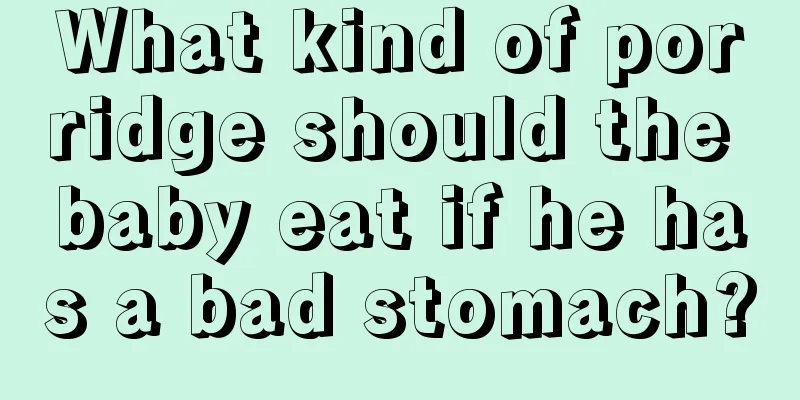What are the symptoms of cerebral palsy in premature babies?

|
Premature babies are prone to illness, so they usually stay in an incubator for a period of time. Because they have not yet fully developed in the mother's womb, especially the brain, they are very likely to develop cerebral palsy. However, this disease does not mean that all premature babies will develop cerebral palsy. Pregnant mothers can learn about this knowledge. Let us also learn about the symptoms of cerebral palsy in premature babies. According to experts, not every premature baby will develop cerebral palsy, but compared with normal full-term babies, premature babies are more likely to have cerebral palsy, and the earlier the baby is born, the greater the chance of cerebral palsy. However, if the symptoms of cerebral palsy in premature babies can be identified early, most babies can recover to normal through reasonable and scientific treatment, and their future lives will not be affected, because the baby's brain is plastic. Moreover, if the premature baby has cerebral palsy, there will be some abnormal postures. The most common one is that the baby with cerebral palsy often has his head tilted back, falls backward when sitting at 6 months, squeezes his legs together, and has difficulty in changing diapers and so on. Hypertonia or hypotonia often occurs. In normal children, the head position is suddenly lowered and there is a hug reflex (like a startle). This reflex usually disappears after 6 months, but it does not disappear in children with cerebral palsy. Once symptoms of cerebral palsy are discovered in premature babies, active treatment is key. 1. Early symptoms (1) Newborns or three-month-old infants are easily startled, cry incessantly, refuse to drink milk, and have difficulty sleeping. (2) Difficulties in early feeding, chewing, drinking, and swallowing, as well as drooling and breathing disorders. (3) Low sensory threshold, manifested as being easily startled by noise or changes in body position, and having an increased hugging reflex accompanied by crying. (4) Normal infants shortly after birth may step alternately with their feet when standing upright due to the stepping reflex. Although it may disappear once at 3 months of age, if the child still has no signs of standing or taking steps at 3 months of age, cerebral palsy should be suspected. (5) Babies over 100 days old are still unable to lift their heads, and their heads still sway when they straighten their backs at 4 to 5 months. (6) Fist clenching: Generally, infants can clench their fists but not open them within 3 months after birth. If the thumb is still adducted and the hand cannot be opened at 4 months, cerebral palsy should be suspected. (7) A normal baby should be able to reach out and grab objects when seeing them between 3 and 5 months old. If a baby still cannot do so after 5 months, it is suspected that the baby has cerebral palsy. (8) Generally, babies will smile 4 to 6 weeks after birth and recognize people later. Children with spastic cerebral palsy have apathetic expressions, while children with athetoid cerebral palsy often look sad. (9) Muscles are loose and unable to turn over, and movements are slow. When you touch the inner thigh of the child, or let the child's feet rest on the bed or jump up and down, the lower limbs will extend and cross. (10) Stiffness, especially when dressing, the upper limbs are difficult to put into the cuffs; when changing diapers or washing, the thighs are difficult to extend; when wiping the palms and taking a bath, the limbs become stiff. Babies don't like baths. (11) Premature development: Children with cerebral palsy may roll over prematurely, but it is a sudden reflexive rolling over, with the whole body rolling over like a log, rather than a conscious segmental rolling over. Infants with spastic diplegia may have stiff legs before they can sit up and stand on pointe like a ballerina. 2. Main symptoms (1) Movement disorders: The patient has poor motor self-control ability. In severe cases, the patient cannot grasp objects with his hands or walk with his feet. Some patients cannot even turn over, sit up, stand, or chew and swallow normally. (2) Postural disorders: Various abnormal postures, poor posture stability, the head cannot be straightened at 3 months, and is accustomed to leaning to one side, or swaying left and right, front and back. The child does not like to take a bath and has difficulty opening his fist when washing his hands. (3) Intellectual Disability: About 1/4 of the children have normal intelligence, about 1/2 have mild or moderate intellectual disability, and about 1/4 have severe intellectual disability. (4) Language barriers: difficulty in language expression, unclear pronunciation or stuttering. (5) The most common visual and auditory impairments include esotropia and difficulty in distinguishing the rhythm of sounds. (6) Growth and development disorders and short stature. (7) Developmental disorders cause teeth to be loose and easily broken. Orofacial dysfunction, with spasms or sometimes uncoordinated contractions of the facial and tongue muscles, difficulty chewing and swallowing, difficulty closing the mouth, and drooling (8) Emotional and behavioral disorders: Stubbornness, willfulness, irritability, and withdrawal, with mood swings and sometimes compulsive, self-harming, and aggressive behaviors. (9) 39% to 50% of children with cerebral palsy develop epilepsy due to fixed lesions in the brain, especially those with severe intellectual disability. The above are the symptoms of cerebral palsy in premature babies. Premature babies have a much higher risk of developing cerebral palsy than normal babies. However, with proper care, this situation can be avoided. Babies have a strong ability to recover. There are also special care methods for premature babies, just observe their reaction abilities more. |
<<: What is the baby's spleen and stomach recipe?
>>: What is fundus examination for premature infants?
Recommend
What are the consequences of being born one month prematurely? The dangers of premature birth
Some friends think that being born one month prem...
Why does baby's poop smell sour?
If the baby's poop has a sour and smelly smel...
Symptoms of neonatal stridor
We all know that the trachea of a newborn is no...
Baby's facial color changes when jaundice is gone
When babies are just born, they will have jaundic...
Coffee spots on children
Coffee stains are something that many people don’...
What are the symptoms of vitamin D deficiency in children?
Every child is a treasure of his or her parents. ...
What should I do if my 4 and a half month old baby has diarrhea?
A 4-month-old baby is still relatively young. If ...
Red rash around baby's mouth
An obvious characteristic of babies is that they ...
When does the baby's stomach develop?
The stomach is a very important organ in our body...
Symptoms of infants not adapting to milk powder
After frequent incidents with domestic milk powde...
Why does my baby have swollen eyes after waking up?
For us adults, it is normal to sleep for 7-8 hour...
How old does a baby have to be to stop spitting up milk?
In fact, nowadays babies need to pay special atte...
Five types of food that harm your baby's brain, parents should know
As we all know, foods such as milk, fish, carrots...
Precautions after appendectomy in children
Appendicitis is a common condition in children. I...
What to do if a seven-year-old child has repeated fevers
As children grow up, they will always experience ...









